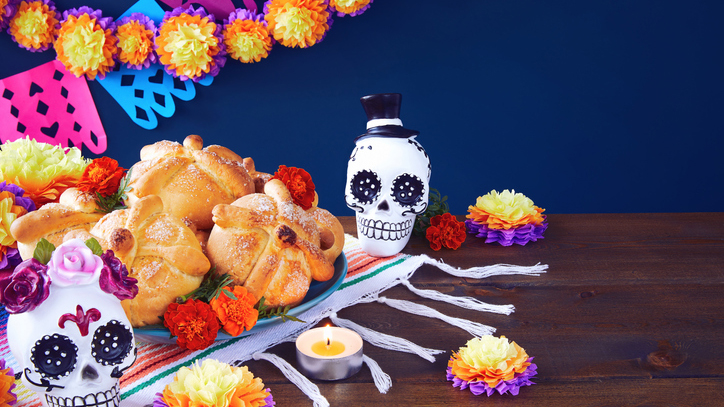While Dia de los Muertos, or Day of the Dead, occurs around the same time as Halloween, the two holidays are very different. Those who celebrate Halloween see the season as a time for fun frights and pranks, and Dia de los Muertos is a celebration of life and a cheerful remembrance of those who have passed away. Since the holiday is so misunderstood, here is an explanation of some Dia de los Muertos traditions that will show what this holiday is all about.
Photos
Photos are placed on ofrendas (altars) to depict the person or people the ofrenda was made for and encourage them to return to the living world. Some people also put out photos of their favorite celebrities, artists, and family pets who have passed. Personal items and favorite foods can be used as well.
Cempazuchitl (Marigolds)
Also known as flor de muertos, or flowers of the dead, cempazuchitl (sem-pa-sú-chil), or marigolds, represent the fragility of life. Their sweet scent and bright orange and yellow flowers are believed to draw spirits from the afterlife and guide them to the ofrendas. Loose petals are also strewn along the ground to form a path for spirits to follow.
Papel Picado
Papel picado is brightly colored and intricately cut tissue paper that is used as a decoration for many holidays, including Dia de los Muertos. It represents the union between life and death, as well as the fragility of life since it is so thin and lightweight. As the papel picado flutters in the air, it lets families know that their loved ones have arrived at the ofrenda.
Pan de Muerto
Pan de muerto, or bread of the dead, is a sweet bread with sugar sprinkled on top. Usually, it shaped like a round loaf with bone shaped pieces crisscrossed and draped over it along with a small, round piece on top to mimic the shape of a skull and crossbones. It is believed that through the smell, spirits are nourished when they return to the living world.
Calaveras
Calaveras, or sugar skulls, are the one of the most recognizable traditions of Dia de los Muertos with their bright colors and intricate designs. These sugary creations represent an individual that has passed and often have the person's name written on its forehead. Often they are made of a mixture of sugar, water and meringue powder, but they can also be made with chocolate or amaranth. While they can be eaten, usually, they are just for decoration.
La Calavera Catrina
La Calavera Catrina is a popular icon for Dia de los Muertos. Originally a satirical art piece by José Guadalupe Posada, La Catrina has shifted from commentary on women desiring European fashion over their Mexican heritage to a symbol of the mockery of death itself. Now, people put on makeup and masks to look like brightly colored skeletons and mimic La Catrina.









